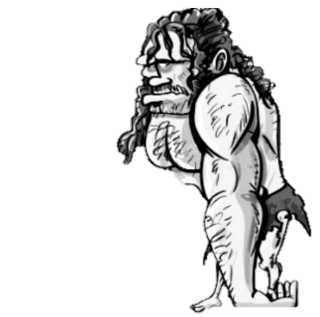Our
Neanderthal Man
He is in each one of us.
Allow me - Homo Neanderthalensis. In short: Neanderthal man.
I am Homo Neanderthalensis, your extinct relative from about 30 to 40 thousand years ago. Most people have heard of me, but they don't know me. Whether you like it or not - we are related. It has been proven that in any case between 1.5 and 2 percent of humans living in Eurasia, allegedly even up to four percent, and according to recent findings also Africans carry Neanderthal DNA. In view of this fact - do you want to continue to regard me as a primitive caveman?
New studies show that I was faster, smarter and more similar to modern humans than perhaps previously thought. I was highly evolved, a successful hunter-gatherer, could make fire, tools and medicinal plants. Can you do that too?
During one of the excavations, even a hyoid bone was discovered, which is considered a prerequisite for the ability to speak. It may finally be possible to prove that I already had speech.
During our heyday, we had a population of 10,000 to a maximum of 70,000 individuals in Europe. You were just 1,500 Hansels, which is very few and far between. But we lived extremely widely dispersed and in small groups. And we were monogamous, whereas you were like rabbits. And that is why I have been history for thousands of years.
I should have just done it more wildly, then I would probably still be there. Comfortingly, at least a part of me has survived in you. And I am always there to look after you. Please be nice to me.
Through better communication and a more beautiful togetherness to a happier life. How? Ask your Neanderthal!
Chris Metzler
Our Neanderthal - What makes him tick
Do you want to learn more about your Neanderthal and lead a more beautiful, healthier and happier life? Would you like me to support you? When?
Good to know
Where the Neanderthal resides
This Neanderthal is - as we already know - not really far away from us. The approx. 150,000 - 250,000 years of time that separate us from him correspond to about one to two seconds on the 12-hour dial of a clock in the history of the Earth. Since the formation of the earth about four billion years ago, there is only about a good second between Neanderthal man and us. It was only a moment ago that we lived in caves. It's the same for our brain.
So where does it live? In layman's terms, we can probably locate it somewhere in the area of the limbic system, a functional unit of the brain responsible for emotions and drive behaviour.

Our brains and our Neanderthals, under pressure, would readily resort to means that were not only very effective in a long ago time, but also completely accepted in the social context of the time. Roaring at someone and striking was the order of the day back then. In today's social context, such behaviour is unimaginable because it is inappropriate. But the mechanisms in our heads still work the same way. So we have to endure the difficult conflict of not being able to give in to the deep-seated primal reflexes and still deal with the pressure that weighs on us.
Get to know your Neanderthal!
Our Neanderthal deserves not to be forgotten. We should honour him, treat him with care and always include him in our thoughts and actions. More about this in the book.


Log in and get started
